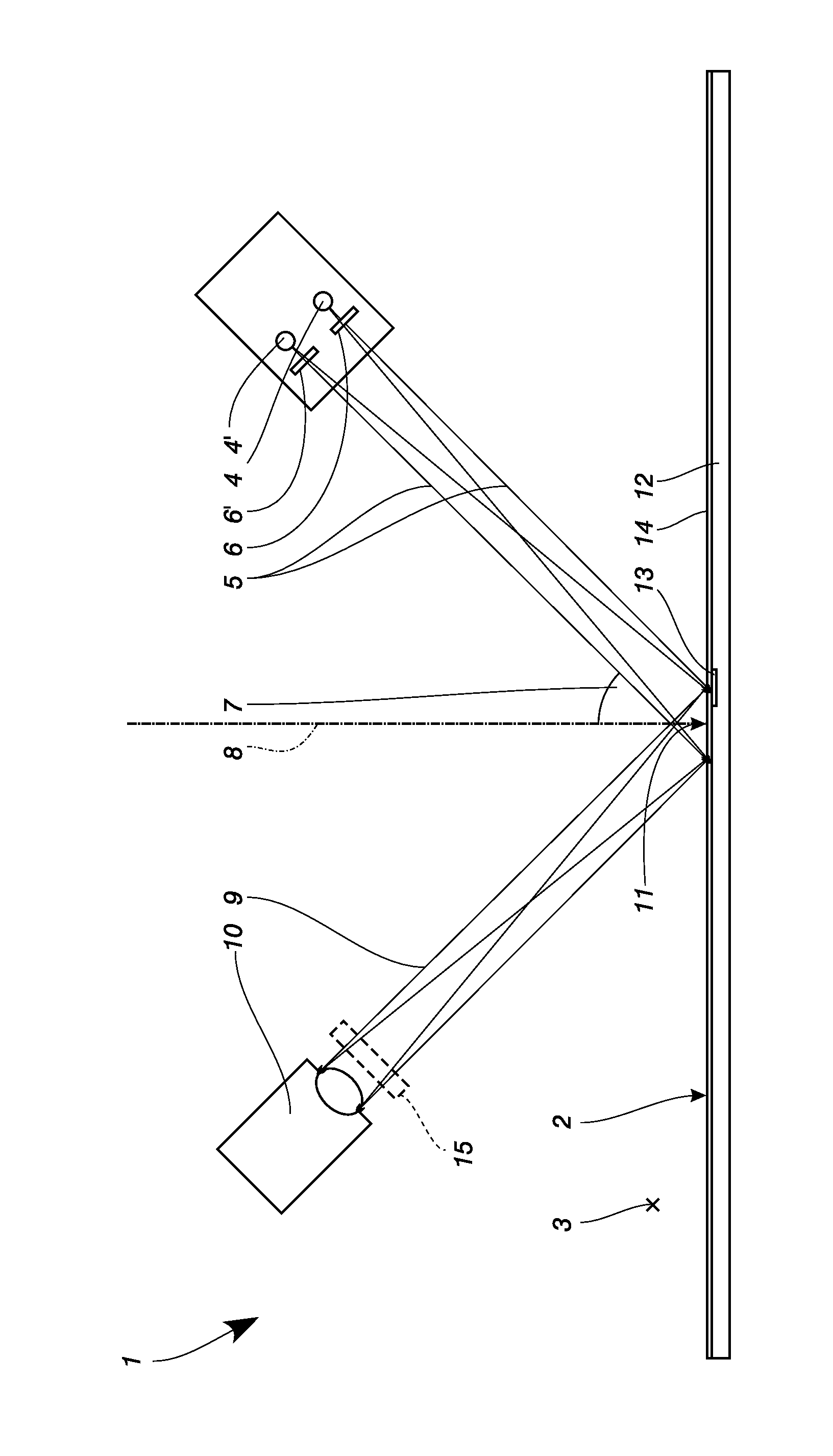Sensor for capturing a moving material web
a technology of moving material and sensor, which is applied in the field of sensor for capturing moving material web, can solve the problems of affecting the reliable capture of the inability of the detection light to determine the position of the moving material web from the detection light, and the inability of the detection light to accurately capture the position of the metal strip. to achieve the effect of scanning difficult material webs
- Summary
- Abstract
- Description
- Claims
- Application Information
AI Technical Summary
Benefits of technology
Problems solved by technology
Method used
Image
Examples
Embodiment Construction
[0016]The single FIGURE shows a schematic principle illustration of a sensor 1. A sensor 1 according to FIG. 1 serves for capturing a moving material web 2, which moves along a direction of motion 3 which is directed towards the observer. The sensor 1 has two light sources 4, 4′ which emit emission light 5. Arranged downstream of the light sources 4, 4′ is a respective polarization filter 6, 6′, which generate linearly polarized emission light 5. The emission light 5 that is thus polarized strikes the material web 2 at an acute angle 7 measured with respect to a normal 8. Part of the incident light is reflected by the material web 2, wherein the reflectivity depends both on the polarization state of the incident light and on the material properties of the material web 2. The reflected detection light 9 finally travels to a light detector 10, which is configured for example as a camera. An additional polarization filter 15 can optionally be arranged upstream of the light detector 10....
PUM
 Login to View More
Login to View More Abstract
Description
Claims
Application Information
 Login to View More
Login to View More - R&D
- Intellectual Property
- Life Sciences
- Materials
- Tech Scout
- Unparalleled Data Quality
- Higher Quality Content
- 60% Fewer Hallucinations
Browse by: Latest US Patents, China's latest patents, Technical Efficacy Thesaurus, Application Domain, Technology Topic, Popular Technical Reports.
© 2025 PatSnap. All rights reserved.Legal|Privacy policy|Modern Slavery Act Transparency Statement|Sitemap|About US| Contact US: help@patsnap.com


